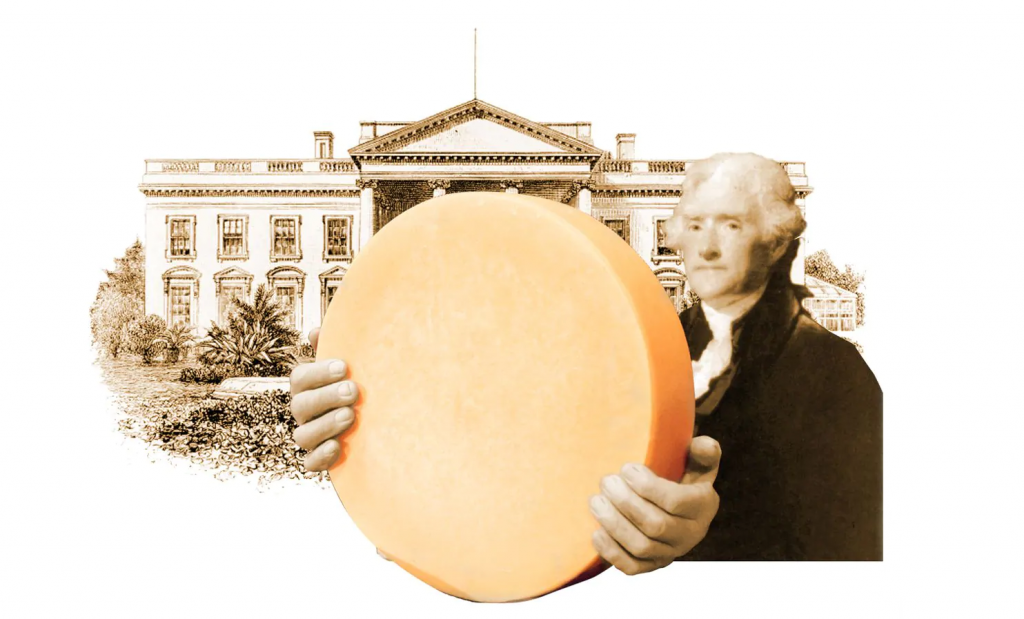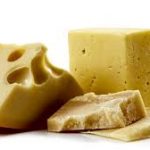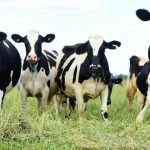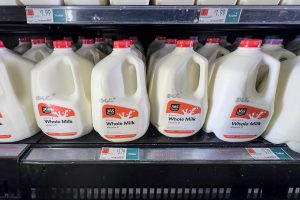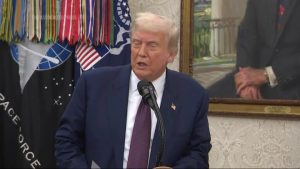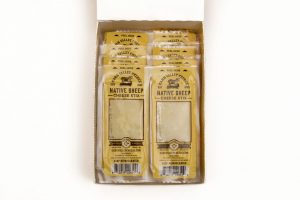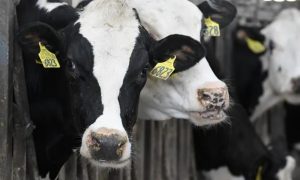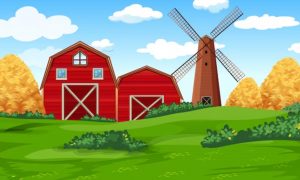
In the waning days of 1801, a Baptist preacher arrived in Washington with an unusual — and very large — token of esteem for President Thomas Jefferson.
In modern parlance, Elder John Leland of Cheshire, Mass., could be called a Jefferson fanboy. After Jefferson won the closely contested presidential election of 1800, Leland exulted that “the greatest orbit in America is occupied by its brightest orb” — and he conceived a memorable tribute to honor him.
On New Year’s Day 1802, Leland called at the President’s House (it would not be formally designated as the White House until 1901) to present a gigantic cheese produced by the dairy farmers of Cheshire dubbed the “Mammoth Cheese” by Jefferson’s Federalist foes.
The president’s political rivals were trying to be snarky, but Jefferson and Leland happily embraced the tag — and for good reason. The cheese was approximately four feet in diameter, 12.5 feet in circumference and, according to one estimate, 17 inches thick. A contemporary compared it to a large wagon wheel. Most sources agree the formidable fromage probably weighed about 1,325 pounds.
That’s a lot of cheese. But the Baptist dairy farmers of Cheshire, who had faced persecution and state-mandated support for Congregational pastors, believed they had much for which to be grateful with the election of Jefferson. The new president had written Virginia’s statute of religious freedom and was seen as a champion of their right to worship as they saw fit — without meddling by the government.
“We wish to prove the love we bear to our President not by words alone, but in deed and in truth,” according to a formal statement read to Jefferson as the cheese was presented. “It is not the last stone of the Bastile; nor is it an article of great pecuniary worth; but as a freewill-offering, we hope it will be favorably received.”
Presidents have been the recipients of unusual gifts for almost as long as the office has existed. In 1839, the sultan of Morocco presented the U.S. consul in Tangier with two lions as a gift to President Martin Van Buren. The consul reluctantly accepted custody of the lions after being told the sultan’s representative feared execution if the animals were returned. In 2011, on a trip to a reptile-infested region of Australia, President Barack Obama was given crocodile insurance.
In early America, giant cheese gifts were not unprecedented. New England whalers thanked the Marquis de Lafayette in 1786 for his efforts to keep down French tariffs on whale oil with a 500-pound cheese, according to historian L.H. Butterfield. In 1837, dairy farmers in Upstate New York sent President Andrew Jackson a giant cheese that Butterfield said outweighed Cheshire’s oversize offering by 165 pounds and many years later figured in a story line of “The West Wing.”
Even so, the gift from Cheshire holds a place in history — both as an undeniably cheesy presidential tribute and as a reflection of the gratitude of Leland and his fellow Baptists for Jefferson’s role in promoting religious freedom.
Born in Grafton, Mass., in 1754, Leland believed freedom of conscience applied to all and considered state support of religion idolatrous, according to historian John Ragosta at the Robert H. Smith International Center for Jefferson Studies at Monticello. Even so, Leland was a “deeply religious evangelical Christian absolutely committed to Jesus Christ,” Ragosta said.
Leland had spent 14 years preaching in Virginia. When he returned with his family to Massachusetts and settled among the Baptists of Cheshire in 1792, he found a community receptive to his enthusiasm for the separation of church and state, Jefferson and the president’s Democratic-Republican Party. To celebrate the Virginian’s victory in 1800, Leland and his neighbors went all out.
The gigantic cheese they envisioned required considerable preparation, according to an account written by C.A. Browne in 1948. Cheshire residents began by counting the number of cows in the community and estimating the number and quality of curds needed to produce the enormous cheese. A local engineer built a giant cheese hoop. On July 20, 1801, farmers turned out en masse with their cows — Leland would later jest that no Federalist cows were allowed, Ragosta said — to contribute milk and curds, which were pressed with a giant screw estimated to weigh 1,450 pounds.
The massive milk product became a 19th-century media sensation as newspapers chronicled its progress toward Washington, Ragosta said. Leland didn’t mind one bit. “I preached all the way there and on my return,” Leland recalled years later, “I had large congregations; led in part by curiosity to hear the Mammoth Priest, as I was called.”
By the time the cheese got to Baltimore, public interest reached a fever pitch.
“The curiosity of the inhabitants of Baltimore was universally excited; men, women, and children flocked to see the Mammoth Cheese,” British traveler John Davis recounted. “Even grey-bearded shopkeepers neglected their counters and participated in the Mammoth infatuation.”
Leland arrived in Washington on Dec. 29 with the cheese in a wagon pulled by six horses, according to the National Intelligencer and Daily Advertiser. When he presented the gift, Leland read a statement from his Cheshire neighbors celebrating the Constitution for its protection of liberty — in particular its “prohibition of religious tests to prevent all hierarchy.” The president responded with a formal statement of his own and paid Leland $200 for the cheese.
Later that day, Jefferson shared his delight in the gift with a group of Federalist lawmakers who ventured to the President’s House for a holiday visit. “We were received with politeness, entertained with cake and wine,” Federalist Rep. Manasseh Cutler of Massachusetts wrote in his diary. Jefferson then showed off the gift, but Cutler’s curdled opinion of the president and his supporters colored his view of the cheese, which he called a “monument to human weakness and folly.”
The cheese remained in the President’s House for several years — yes, years — before the spoiled remains were probably tossed into the Potomac River, according to Ragosta. Domestic staff cut pieces off as the cheese rotted, he said, but enough was still edible, if not appetizing, that it continued to be served at presidential dinners long after its arrival.
In 1804, Sen. William Plumer of New Hampshire dined with Jefferson and recounted an enjoyable meal with fine wine, two bottles of Mississippi River water, pies, fruits and nuts. “His dinner was elegant and rich,” Plumer noted in his diary — with one exception.
The cheese from Cheshire, by now more than three years old, was “very far from being good.”
